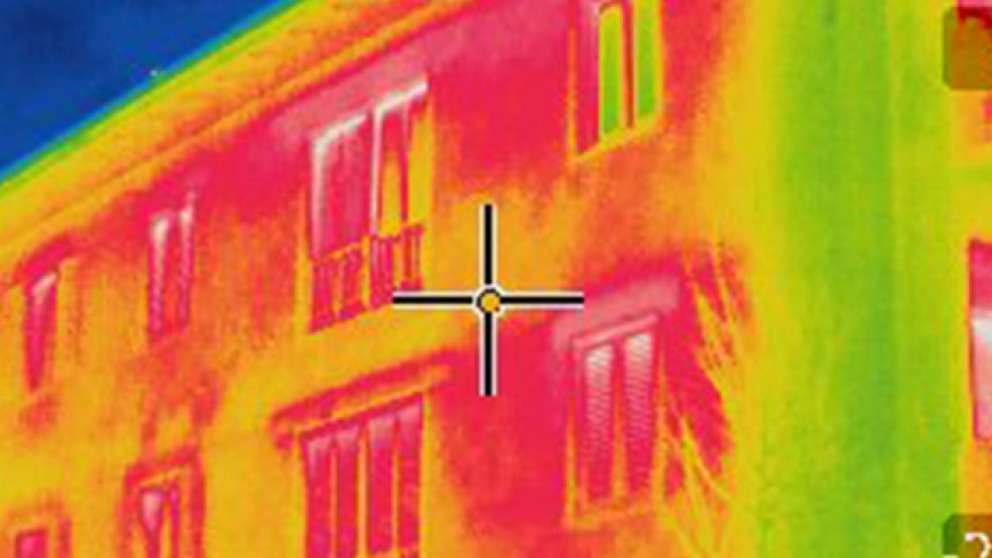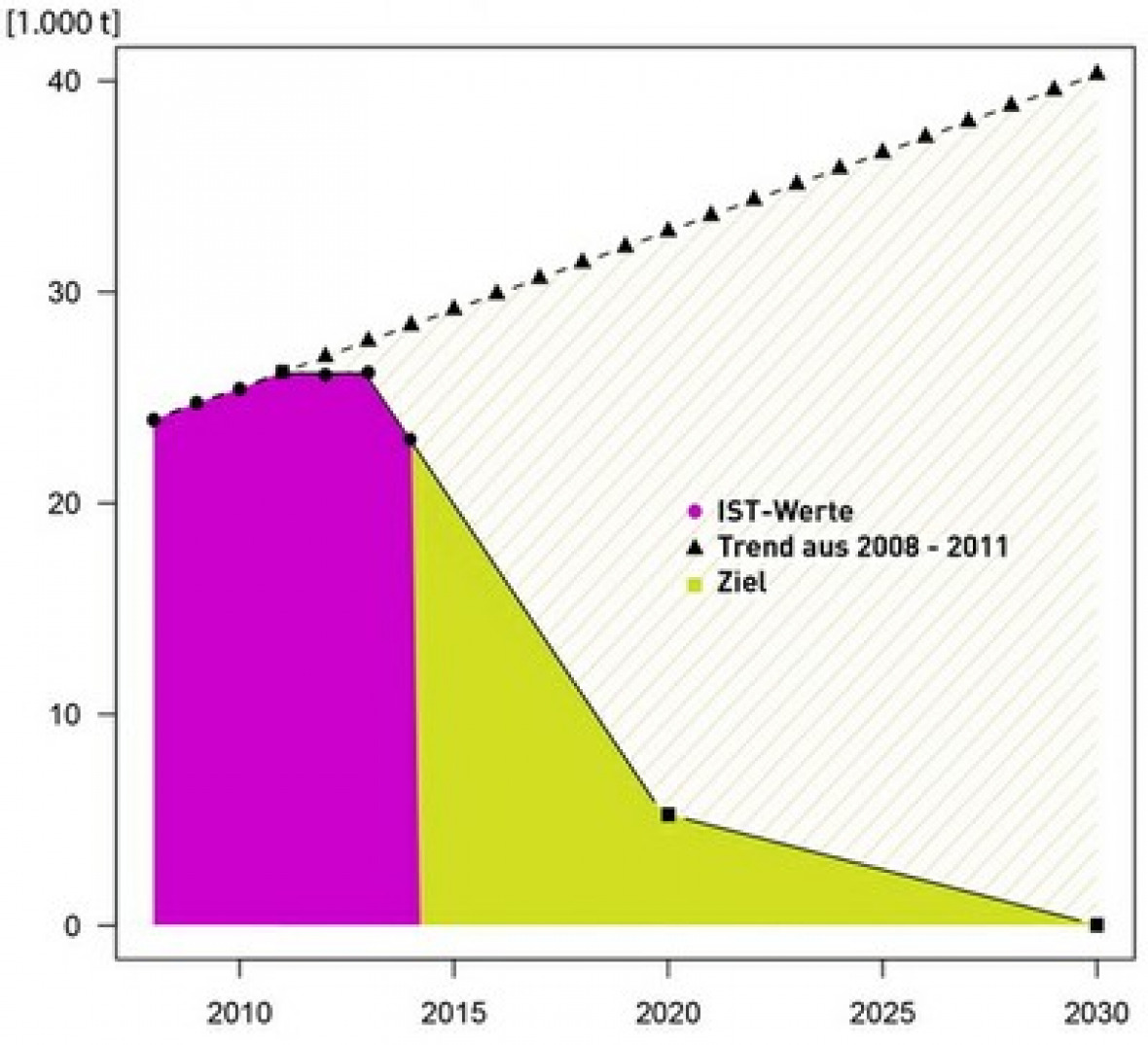Q&A with Norbert Kopytziok about the Way to a ‘Climate-neutral’ University
26.03.2015

Germany aims to reduce its carbon emissions by at least 40 per cent compared to 1990 levels by the year 2020 and achieve an emissions reduction of 80 to 95 per cent by 2050. Kiel University is one of the research institutes that are already playing their part in this process. Norbert Kopytziok and the klik-klima konzept 2030 team are supporting the university in its efforts to become ‘climate-neutral’ by 2030 and reduce its carbon footprint to zero in the areas of energy consumption, building operations and mobility. At the beginning of this process, the University registered with EMAS, a voluntary instrument of the European Union that helps businesses and organisations of all kinds to steadily improve their environmental performance. Norbert Kopytziok visited the IASS in February 2015 to talk about the progress towards climate neutrality already made by the university and outline the next steps.

Can public institutions such as universities play a pioneering role in climate protection?
When it comes to efficient systems, public institutions should set an example. So far, they’ve been happy to tell others how it should be done without doing it themselves. They now need to practise what they preach. In public procurement and energy consumption, for example, it’s often possible to choose more sustainable alternatives. In this way, these institutions become an economic force to be reckoned with. This is because when they demand sustainable and energy-efficient solutions on a massive scale, these solutions become more affordable for a broader customer base.
During their studies, university students learn that you can also contribute to environmental and climate protection in the workplace. The energy-saving tips our klik team passes on to university employees, for example, on the energy savings to be made by replacing a refrigerator, can also be put into practice beyond the workplace. In addition, devices for measuring energy consumption can be borrowed for private use. Integrating sustainable solutions in various institutions has the added benefit of encouraging goodwill, understanding and interest not just at work, but also at home.
How realistic is the target of making Kiel University ‘climate-neutral’ by 2030?
In 2013 the university’s energy-related CO2 emissions exceeded 26,000 tons. As a result of energy-saving measures, we were able to reduce these emissions by 8 per cent in 2014. We want to continue to reduce our CO2 emissions year after year so that we can meet our target of just 5,000 tons by 2020. This represents an 80 per cent reduction in 7 years, something that is realistic if we implement concrete measures. In the area of climate protection, we focus on energy consumption, in particular electricity consumption. Here, our strategy entails operating equipment and facilities only when they are needed, increasing efficiency via technically optimised facilities, and encouraging behavioural changes that result in energy savings. We are, however, aware that we have to be careful to avoid rebound effects, where there is a sudden surge in the use of energetically optimised facilities.
In my experience, communication is key here, maybe even more important than new, supposedly energy-efficient equipment. It’s vital to communicate in a way that fosters a willingness to protect the environment. Luckily, at a university we can avail of expertise in a range of different fields. For example, our efforts are supported by the Communications Studies department. But there is still great scope to expand our cooperation with other departments.

To what measures do you attribute your university’s successes in emissions reduction to date?
After implementing the Eco-management and Audit Scheme (EMAS), we commissioned a climate protection concept. We felt this was important to avoid leaping to action without a plan. The Federal Government’s climate protection initiative funds the elaboration of such concepts. Without this financial support, the university management would have had trouble footing the bill for the concept. We subsequently compared the recommendations of the climate protection concept with the catalogue of measures derived from the EMAS process and took immediate steps to implement the most important measures. Among other things, we set about optimising pump and air conditioning systems, especially in server rooms. At the same time, we began a campaign to save energy. This entails searching for solutions together with our colleagues in university institutes that are particularly energy-intensive and implementing them wherever possible. Our public profile is also quite important. This is why we publish press releases and a newsletter on a regular basis, participate in interdisciplinary events at the university and organise a high-profile event on an annual or biannual basis, such as the Sustainability Day or the Energy Forum.
As a first step, you implemented EMAS at Kiel University. In your view, how important was this step on the way to climate neutrality?
The EMAS guidelines provided in the EC-Eco-Audit Regulation are very useful for anybody interested in climate protection. However, getting the system tested by an external accredited inspector and attaining and using the label are of no real consequence for climate protection. What’s really important here is identifying areas with a significant environmental and climate impact for which you are responsible.
Can you briefly outline the university’s next steps on the way to climate neutrality?
Energy efficiency, energy supply and mobility are next on the agenda. Around 30,000 people work and study at Kiel University; that means huge distances travelled to and from the university. A mobility concept is currently being elaborated to reduce emissions that result from transportation. We’ve made slightly more progress where a sustainable energy supply is concerned. An already completed feasibility study recommends that we build two or three small wind turbines and photovoltaic installations at selected locations. However, these installations will not be enough to cover the university’s energy demands; their value is more symbolic. The construction of a 2-megawatt block-type thermal power station will have a much larger impact. We are still working on plans to optimise building facilities from an energetic point of view as part of a modernisation and ecological restructuring of university institutes foreseen for the near future.
Header photo: istock/aalexx
